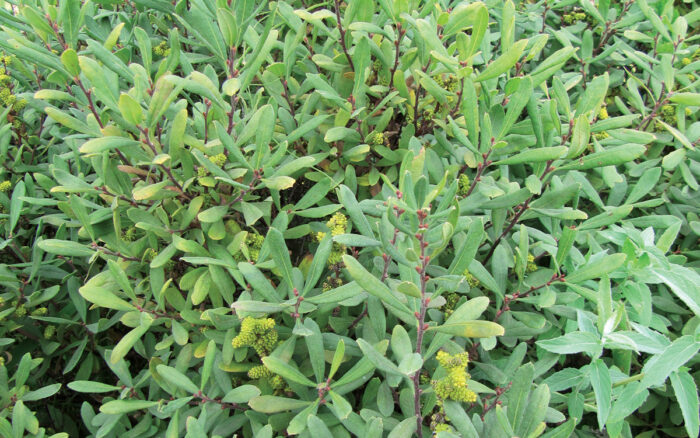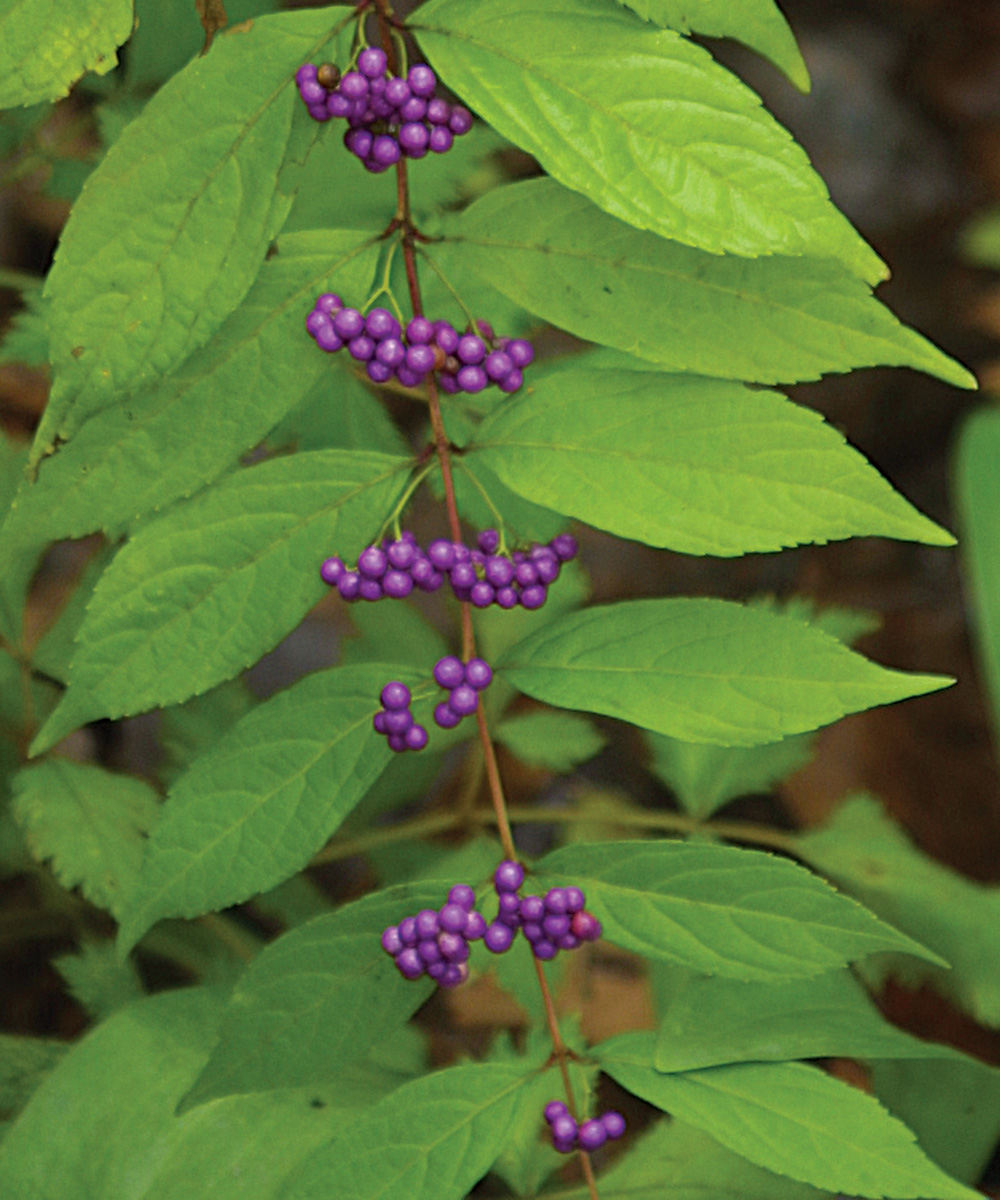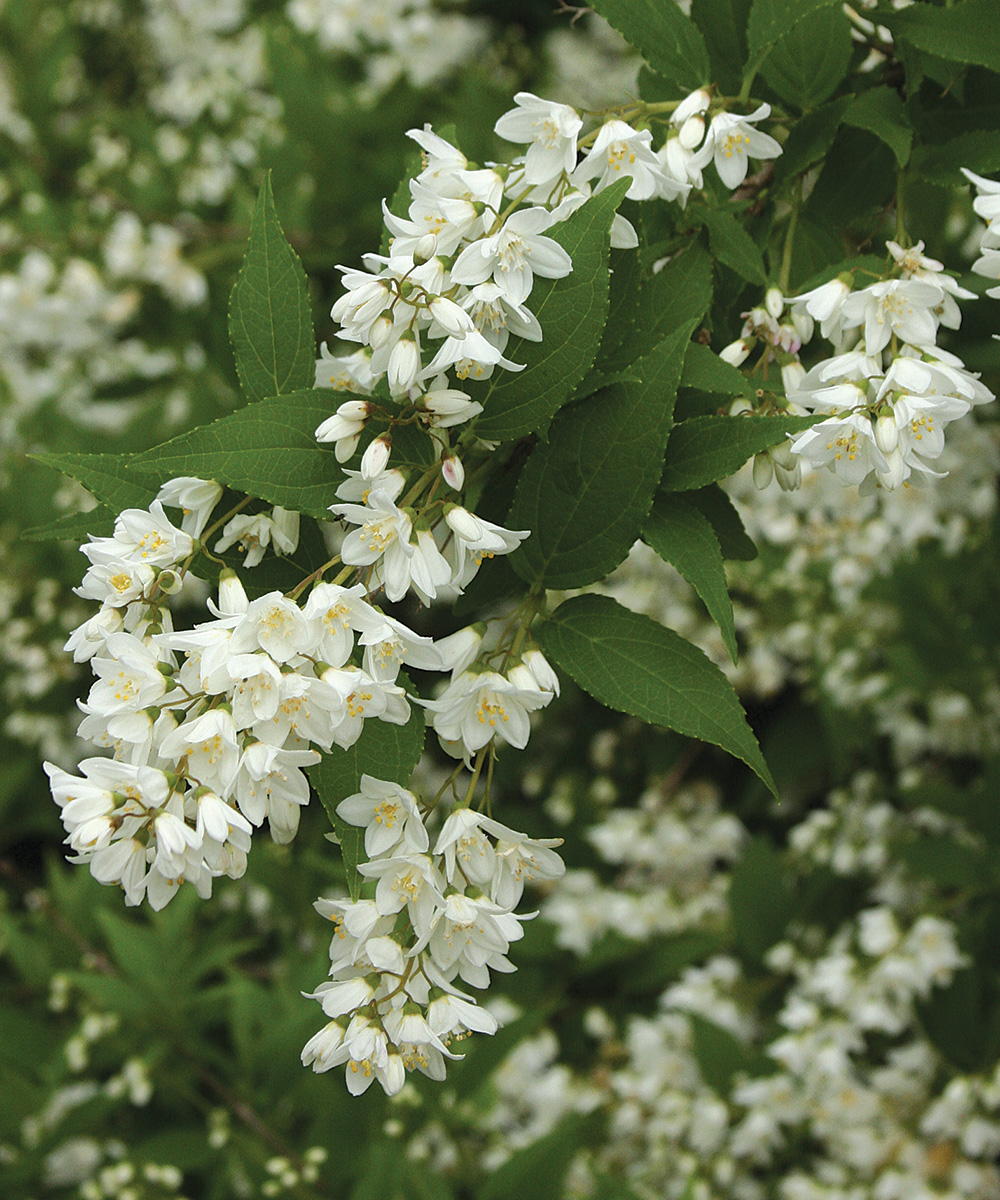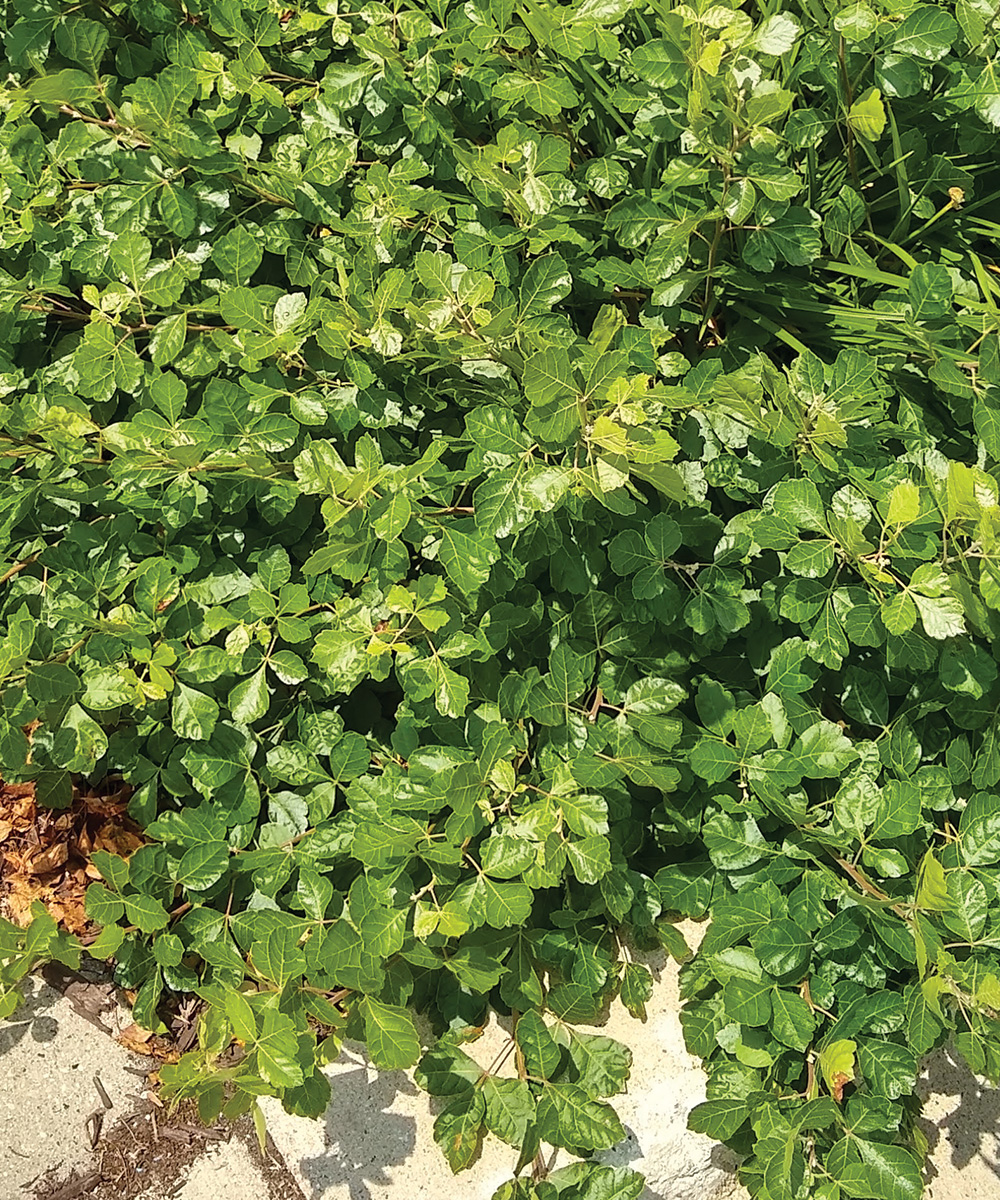
According to NASA Earth Observatory, one-third of the United States experienced some level of drought in 2020. Unfortunately, we know this was not a random anomaly but an increasing trend with more and more of the country experiencing extended dry spells.
If you’ve found yourself outside holding the hose more often in recent years, it might be time to invest in more drought-tolerant plants. Below, you’ll find four expert-selected, resilient shrubs that can easily become stars or backbones of your garden, while shrugging off anything the climate of the Northeast throws their way.
1. ‘Early Amethyst’ Beautyberry

Name: Callicarpa dichotoma ‘Early Amethyst’
Zones: 5–8
Size: 3 to 4 feet tall and 4 to 6 feet wide
Conditions: Full sun to partial shade; well-drained soil
Native range: China, Japan, Korea, Vietnam
If you show a photo of the purple fruit found on this shrub to someone, they will likely ask, “Is that real?” Bright, metallic, amethyst-colored berries coat the stems on this star in fall. Much like costume jewelry, the fruit persists for a long time (up to a couple months) and requires minimal effort and expenditure. A hard pruning to a foot or so in spring is needed to keep the shrub in scale in most gardens, and it is the new wood that generates the berries. Pruning can also keep the overall structure of the plant’s vase shape intact, but know that 3 to 4 feet of new growth can still emerge each season. ‘Early Amethyst’ beautyberry is a great plant for semishade spots with perennials in front of it to cover its sparse legs.
2. ‘Nikko’ Deutzia

Name: Deutzia gracilis ‘Nikko’
Zones: 4–9
Size: 2 feet tall and 5 feet wide
Conditions: Full sun to partial shade; well-drained soil
Native range: Japan
‘Nikko’ deutzia is another plant that performs and performs, offering three seasons of interest with minimal fuss. A well-behaved, slow colonizer, this deutzia has fabulous white flowers in May that persist for a solid month. Its neat green leaves last until fall, when they can change to a deep purple. A shrub with tangled branching low to the ground, ‘Nikko’ doesn’t need to be pruned, since the mound stays tidy and fountain-like in appearance. One downside is that this sort of growth habit can trap garden debris and is not rakeable. If planted in a group, though, the plants can entwine and become a wonderful low hedge in a perennial garden.
3. Sweet Bayberry

Name: Myrica gale
Zones: 2–9
Size: 2 to 4 feet tall and wide
Conditions: Full sun to partial shade; well-drained soil
Native range: Northern and Western Europe, Canada, northern United States
This is a wonderful foliage plant that can adapt to a maintained garden setting or a more naturalistic landscape. The foliage looks like that of bay laurel (Laurus nobilis, Zones 8–10) and has a sweet scent when crushed. In spring, the new buds and catkins are appealing but require some effort to get up close and truly appreciate. The clean blue-green oval leaves offer that verdant buffer, textural backdrop, or filler that is essential in a garden. Sweet bayberry is a plant that generally seeks moister soil, but it has proven to do well in a sunny parking lot too. It is a host plant for a slew of moths and pollinators and is proving to be rabbit resistant in many gardens where I’ve planted it.
4. ‘Gro-Low’ Fragrant Sumac

Name: Rhus aromatica ‘Gro-Low’
Zones: 4–9
Size: 1 to 2 feet tall and 8 feet wide
Conditions: Full sun; lean, well-drained soil
Native range: North America
What creeps in tough, dry soil and also might creep you out if you look quickly at the leaves? ‘Gro-Low’ fragrant sumac, of course. Colonizing in a rangy kind of way, this shrub has attractive, shiny leaves that resemble poison ivy. In spring, little catkins hang off the branches; in fall, the leaves color up to a rich red. This is one of my go-to plants for erosion control on a slope or as a filler for a larger background space in a bed. Easily managed by selective pruning, this shrub still needs plenty of room to grow, since it is definitely not a demure mounding plant!
Christie Dustman is a landscape designer in Hyde Park, Massachusetts.
Fine Gardening Recommended Products

ARS Telescoping Long Reach Pruner
Fine Gardening receives a commission for items purchased through links on this site, including Amazon Associates and other affiliate advertising programs.

Lee Valley Large Gardener's Wash Basket
Fine Gardening receives a commission for items purchased through links on this site, including Amazon Associates and other affiliate advertising programs.

Wagner's 52003 Classic Blend Wild Bird Food, 6-Pound Bag
Fine Gardening receives a commission for items purchased through links on this site, including Amazon Associates and other affiliate advertising programs.



















Comments
Log in or create an account to post a comment.
Sign up Log in